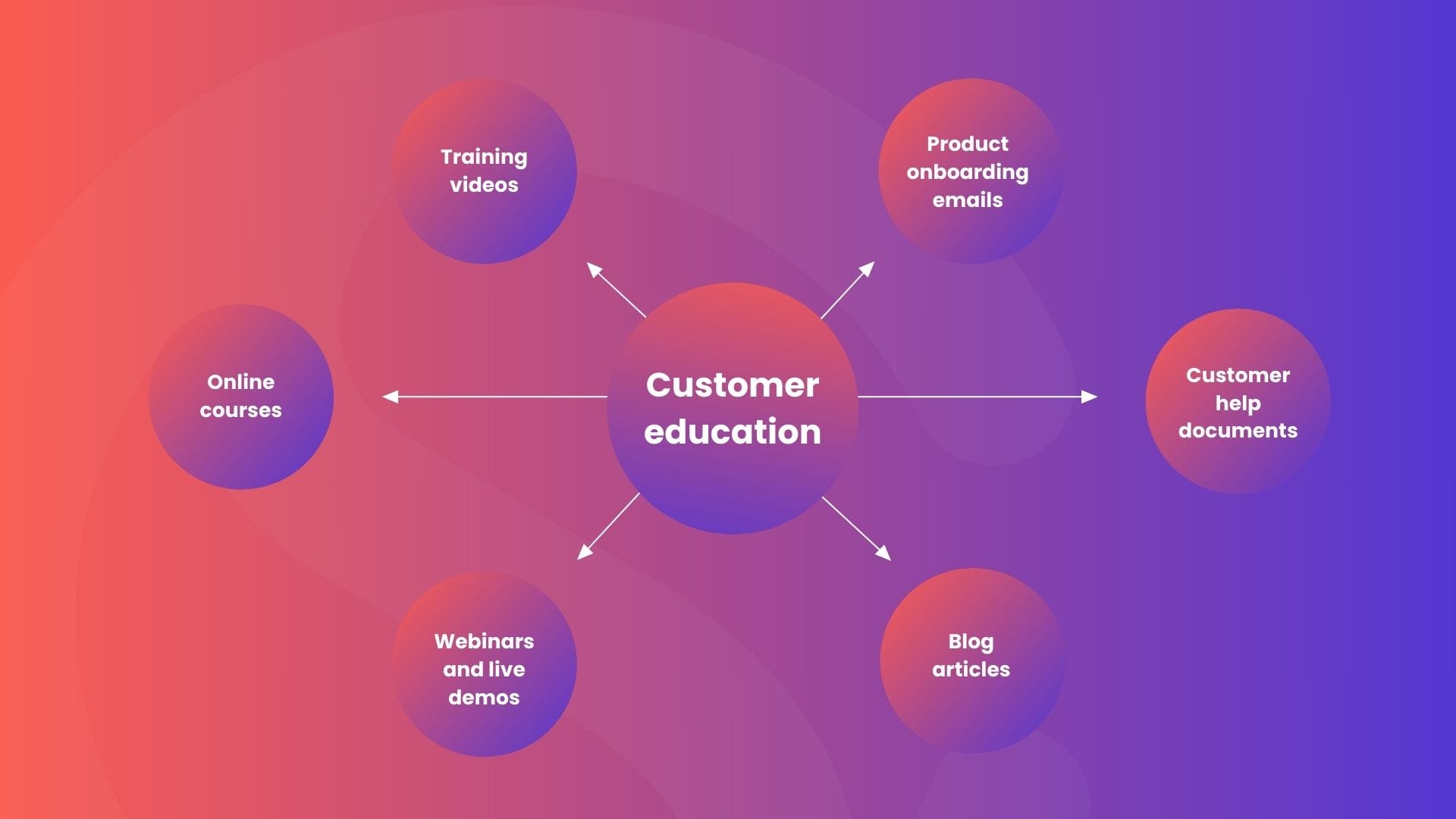Providing high-quality, vetted educational content is paramount for the success of any customer education initiative. If the training materials customers receive are inaccurate, outdated, or misaligned with product best practices, it undermines the entire purpose of educating them in the first place.
Customers who learn from poor or inconsistent content will likely become frustrated, develop misconceptions about your product's capabilities, and struggle to realize its full value. This can lead to lower product adoption, more support inquiries, and higher churn rates.
The solution is to implement rigorous processes for vetting all customer education content before it's published and delivered. This ensures only thoroughly reviewed, accurate information that adheres to current product specs and usage guidelines reaches your customers.
By establishing a structured approach to content ideation, development, review, validation and maintenance, you safeguard the quality and relevance of your educational materials. This allows you to empower customers with trusted knowledge that maximizes their skills and extracts more value from your product over time.
In this article, we’re going to delve into:
- What customer education is
- The importance of vetted educational content
- Creating effective customer education content
What is customer education?
Customer education plays a vital role in the customer success approach by equipping customers with the knowledge and skills needed to maximize the value they derive from a product or service.
It involves guiding new customers with tutorials and walkthroughs to effectively use your product. Comprehensive, digital educational resources are provided to deepen customers' understanding of features and troubleshooting methods.

Vetted educational content
A crucial aspect of an effective customer education program is ensuring that the content provided is accurate, up-to-date, and aligns with your product's best practices. Developing high-quality educational materials requires a structured approach to content creation, review, and maintenance.
One way to achieve this is by establishing a dedicated team or working group responsible for overseeing the customer education content. This team should consist of subject matter experts, product managers, and experienced users who possess deep knowledge of your product or service.
The content creation process should involve the following steps:
- Content ideation: Identify knowledge gaps, common user queries, and areas where customers may benefit from additional guidance based on data from support tickets, user communities, and customer feedback.
- Content development: Subject matter experts (SME) should create initial drafts of the educational content, adhering to established guidelines for formatting, tone, and style.
- Content review: The draft content should undergo a rigorous review process by the working group, ensuring accuracy, clarity, and alignment with best practices.
- Content validation: Conduct pilot testing with a select group of customers or power users to gather feedback on the effectiveness and usability of the educational materials.
- Content publication: After incorporating any necessary revisions, publish the vetted content on your customer education platform or distribute it through appropriate channels.
- Content maintenance: Regularly review and update the content to reflect product updates, new use cases, or changes in industry best practices.
By implementing a structured process for content development, review, and maintenance, you can ensure that your customer education program delivers reliable, high-quality information that empowers your customers to maximize the value they derive from your product or service.
Creating effective digital education content
Developing engaging and impactful value-led content is crucial for the success of a digital education program.
Content should be aligned with your target audience's needs, adopt microlearning principles for brevity and focus, and be delivered in a conversational tone to enhance accessibility. Interactive elements and real-world applications further enrich the learning experience, making the content far more relatable and effective.
When crafting digital education content, it's essential to consider the diverse learning preferences of your audience. For instance, some individuals may prefer visual aids, such as videos or animated tutorials, while others may respond better to written guides or interactive simulations. By offering a variety of content formats, you can cater to different learning styles and increase the likelihood of effective knowledge transfer.
No matter what, your content should be organized logically and intuitively, with clear navigation and search functionality to enable users to easily find the information they need. It’s imperative you regularly update your content with new tutorials to coincide with new feature releases, best practices, and industry trends. This ensures that users have access to the most up-to-date and relevant information.
Re-familiarize yourself with the essentials of customer success
Looking for a well-rounded course that teaches the fundamental properties of customer success? Then look no further than our flagship course, Customer Success Core: Certified.
Accelerate your customer success career with the most cutting-edge and comprehensive curriculum around, and walk away with new knowledge, tried and tested strategies, and a competitive edge.
By the end of the course, you'll:
🧠 Understand the full breadth of the CS function.
💪 Be armed with all and only the most up-to-date and successful CS tactics and trends.
📈 Up-skill yourself in every core competency required for your role, and prove your strategic value.
🏆 Tap into the proven strategies used at some of the world’s most innovative and established brands.
🔖 Earn an official certification to boost your resumé and accelerate your career.



 Follow us on LinkedIn
Follow us on LinkedIn



